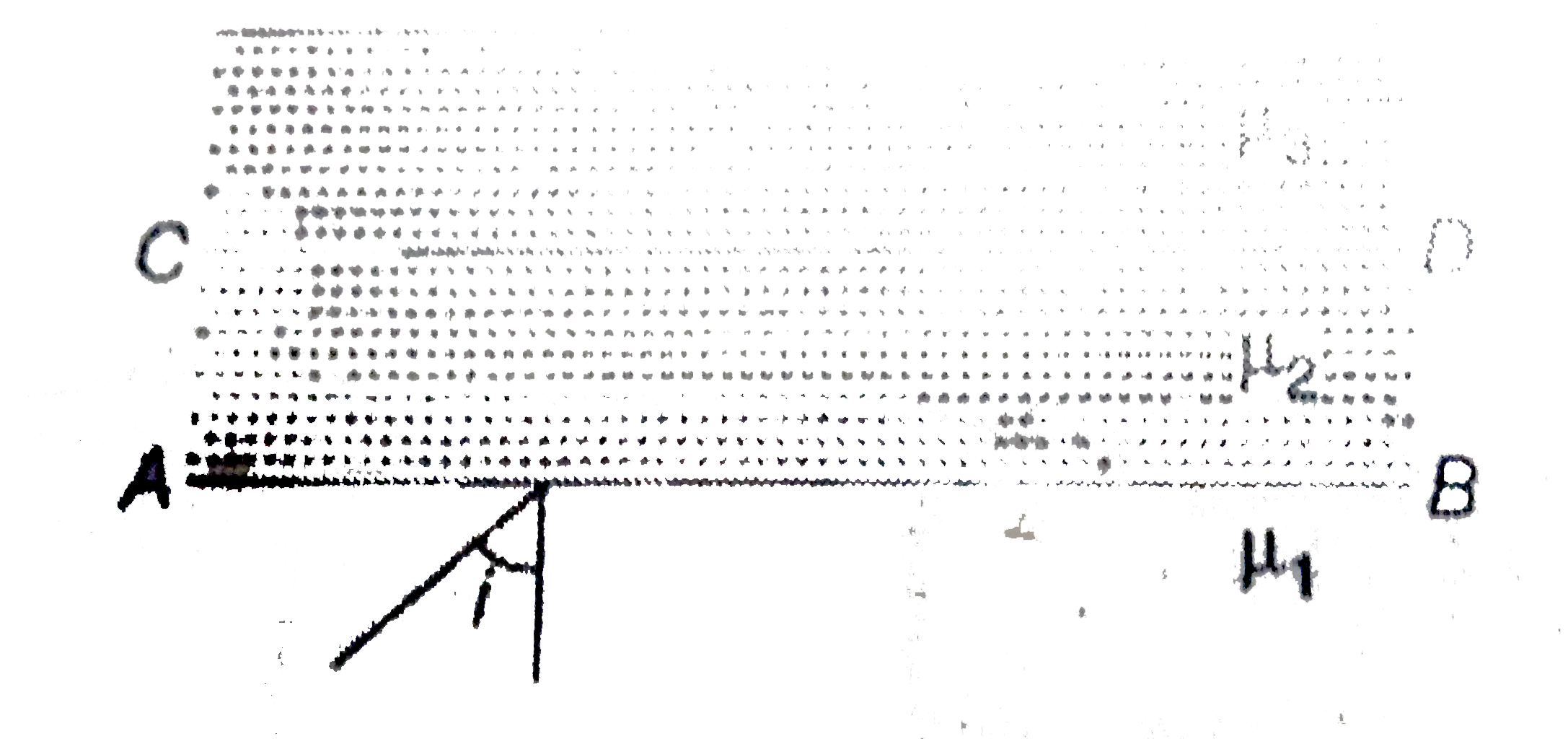Which of the following is not due to total internal reflection ?
Difference between apparent and real depth of a pond
Mirage on hot summer days
Brilliance of diamond
Working of optical fiber
The correct Answer is:A
To determine which of the following phenomena is not due to total internal reflection, we need to analyze the options provided in the question.
1. Understanding Total Internal Reflection:
Total internal reflection occurs when a wave (like light) hits a boundary between two media at an angle greater than the critical angle, causing all the light to be reflected back into the medium instead of refracting into the second medium. This phenomenon is responsible for several optical effects.
2. Analyzing the Options:
- Option 1: Apparent depth in a pond - This phenomenon is due to refraction, not total internal reflection. When light travels from water to air, it bends, making the object appear shallower than it actually is.
- Option 2: Brilliance of diamonds - This is due to total internal reflection. Diamonds have a high refractive index, and when light enters them, it reflects internally, enhancing their brilliance.
- Option 3: Working of optical fibers - Optical fibers utilize total internal reflection to transmit light signals over long distances without significant loss.
- Option 4: Rainbow formation - This is primarily due to refraction and dispersion of light, but total internal reflection can also play a role in the formation of secondary rainbows.
3. Conclusion:
Based on the analysis, the phenomenon that is not due to total internal reflection is the apparent depth in a pond. Therefore, the correct answer is the first option.
Total internal reflection occurs when a wave (like light) hits a boundary between two media at an angle greater than the critical angle, causing all the light to be reflected back into the medium instead of refracting into the second medium. This phenomenon is responsible for several optical effects.
- Option 1: Apparent depth in a pond - This phenomenon is due to refraction, not total internal reflection. When light travels from water to air, it bends, making the object appear shallower than it actually is.
- Option 2: Brilliance of diamonds - This is due to total internal reflection. Diamonds have a high refractive index, and when light enters them, it reflects internally, enhancing their brilliance.
- Option 3: Working of optical fibers - Optical fibers utilize total internal reflection to transmit light signals over long distances without significant loss.
- Option 4: Rainbow formation - This is primarily due to refraction and dispersion of light, but total internal reflection can also play a role in the formation of secondary rainbows.
Based on the analysis, the phenomenon that is not due to total internal reflection is the apparent depth in a pond. Therefore, the correct answer is the first option.
Similar Questions
Knowledge Check
Which of the following is not a major international tournament?
ANational gamesBAsian gamesCOlympic gamesDFIH World cup
Which of the following prevents internal reflection of light within the eye
or
Coloured (Pigmented) layer of eye is
View SolutionMaterial A has critical angle iA, and material B has critical angle iB(iB>iA). Then which of the following is true
(i) Light can be totally internally reflected when it passes from B to A
(ii) Light can be totally internally relected when it passes from A to B
(iii) Critical angle for total internal reflection is iB−iA
(iv) Critical angle between A and B is sin−1(siniAsiniB)
View SolutionConditions Of Total Internal Reflection
View SolutionState the consequences of total internal reflection?
View SolutionIn the figure shown, μ1>μ2>μ3. What are the limits of angle i so that it is neither get total internal reflection at AB nor at CD ?

View SolutionThe refractive index of the core of an optical fibre is μ2 and that of the cladding is μ1. The angle of incidence on the face of the core of that the light ray just under goes total internal reflection at the cladding is
View SolutionWhich of the following is correct regarding the internal energy of a substance ?
View Solution